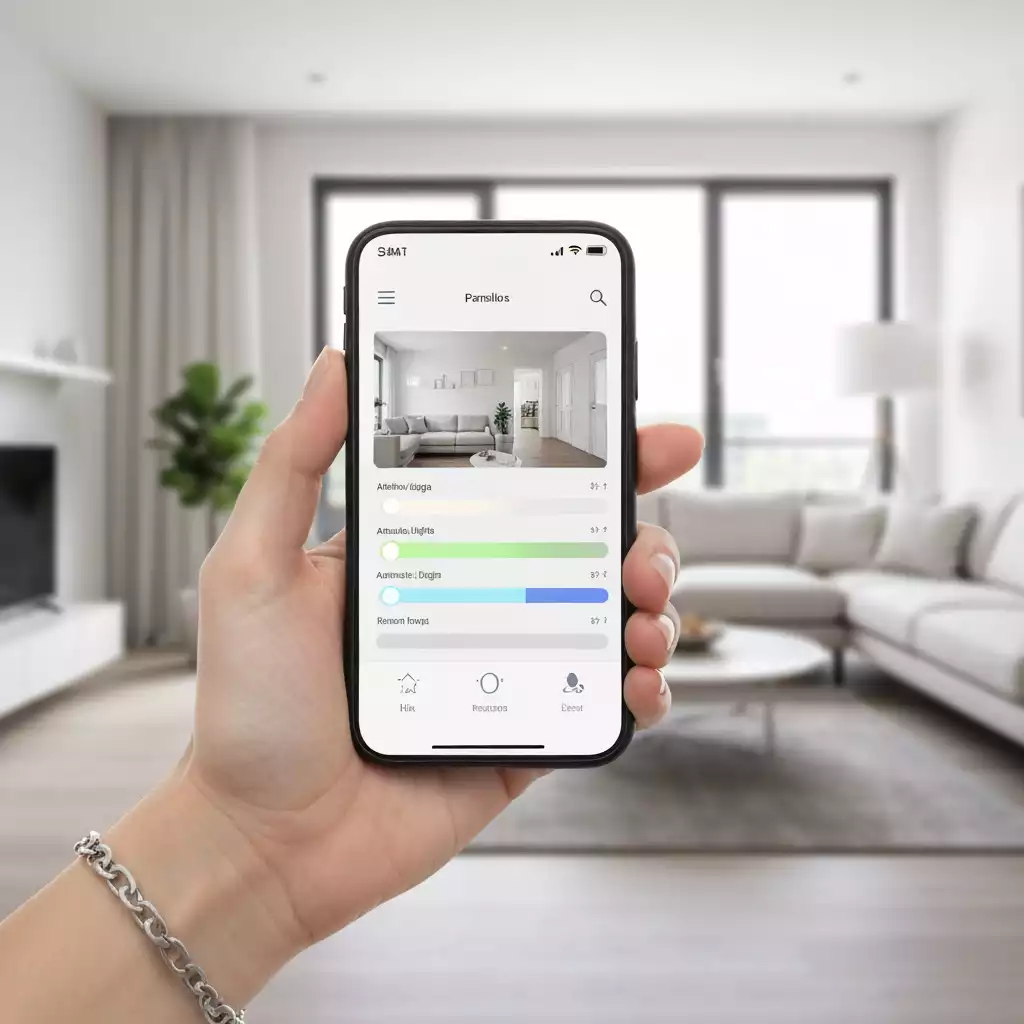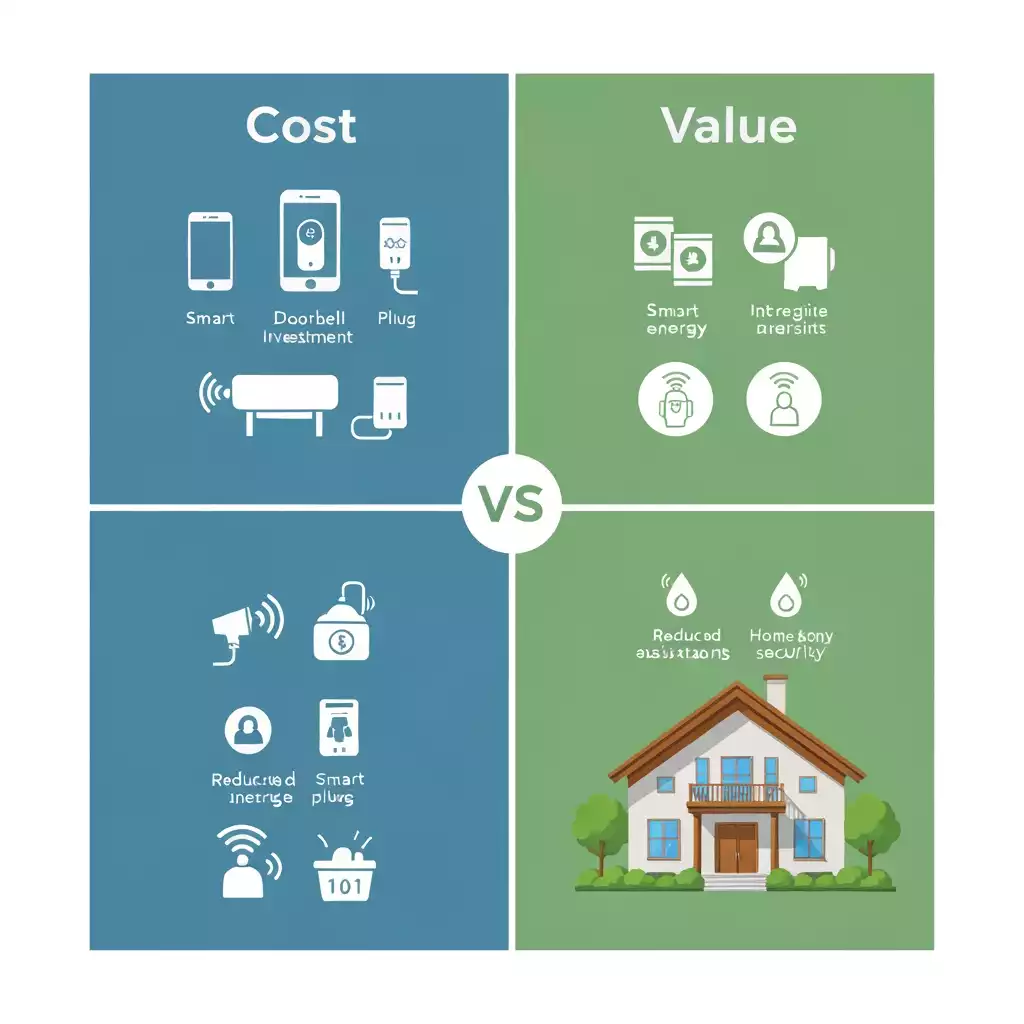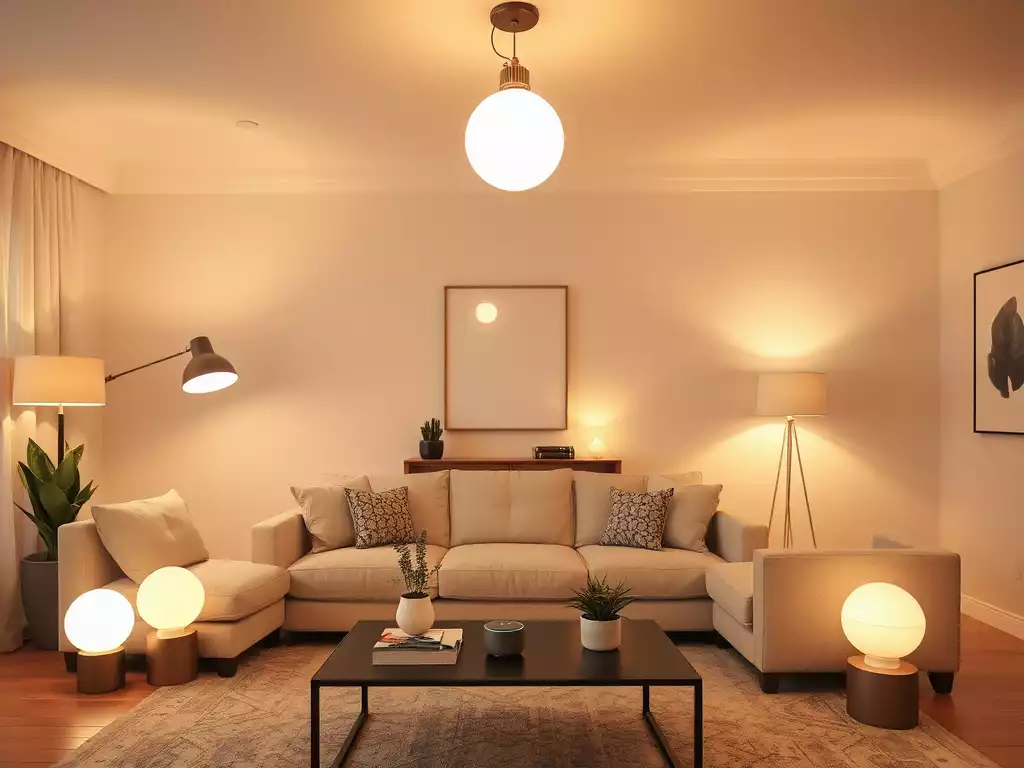In an era where home convenience meets cutting-edge technology, smart lighting is transforming how we interact with our living spaces. Imagine effortlessly controlling the ambiance of your home with just a tap on your smartphone or a simple voice command. This guide will reveal why smart lighting is no longer just a luxury but a necessity for modern households.
What You Will Learn
- Smart lighting enhances home functionality by providing remote access, scheduling, and voice control.
- Energy efficiency is a core benefit, with smart lights consuming less power compared to traditional bulbs.
- Integration with other smart home devices creates a unified control system for greater automation.
- Investing in smart lighting can lead to long-term savings through reduced energy bills.
- Choosing Matter-compatible devices ensures your lighting systems remain relevant and secure as technology evolves.
- LED technology offers a sustainable option with a long lifespan and instant brightness, enhancing overall home ambiance.
Understanding Smart Lighting: A Modern Home Essential
Smart lighting is not just a trend; it’s becoming a crucial part of modern home design. With the ability to control your lights from your smartphone, tablet, or even your voice, smart lighting solutions bring both convenience and efficiency to our daily lives. But what exactly is smart lighting, and why is it so important?
In today’s fast-paced world, having control over your home environment is more essential than ever. From energy savings to enhanced security, smart lighting can provide a range of benefits that traditional lighting simply can’t match!

What is Smart Lighting and Why Does It Matter?
Smart lighting refers to lighting systems that can be controlled remotely via a smartphone app or voice assistant. This technology not only allows you to turn your lights on and off but also to adjust brightness, change colors, and set schedules. Smart lighting matters because it can significantly enhance your home’s functionality and energy efficiency.
- Energy Efficiency: Smart lights consume less power than traditional bulbs.
- Convenience: Control your lighting from anywhere in your home.
- Customization: Change colors and brightness to suit your mood or activity.
- Security: Set lights to mimic your presence when you’re not home.
Understanding these benefits helps you appreciate why smart lighting is becoming a staple in homes. With more people seeking ways to improve their living spaces, smart lighting stands out as a modern solution!
Key Features of Smart Lighting Systems
Smart lighting systems come packed with features that enhance their usability and efficiency. Here are some key features you should consider when choosing your system:
- Remote Access: Control your lights from anywhere using an app.
- Scheduling: Set times for lights to turn on or off automatically.
- Integration: Compatibility with other smart home devices.
- Voice Control: Use voice commands via assistants like Alexa or Google Assistant.
These features make smart lighting not only convenient but also a fun way to personalize your home. Imagine coming home to a perfectly lit space without having to lift a finger!
The Role of Smart Home Integration in Lighting Solutions
Smart lighting systems are often part of a larger smart home ecosystem. Integration with other devices—such as thermostats, security cameras, and speakers—creates a seamless smart home experience. Integration enhances functionality and can lead to improved energy efficiency and security. For more insights on how smart lighting integrates into a broader smart home ecosystem, the ENERGY STAR website provides valuable tips on smart lighting within smart homes.
- Unified Control: Manage all your devices from a single app.
- Enhanced Automation: Create routines that sync lighting with other devices.
- Improved Security: Automate lighting to deter intruders.
This interconnectedness is a key selling point for smart lighting. When paired with other smart home devices, the benefits multiply, making your daily life easier and more enjoyable!
We Want to Hear From You!
Have you already invested in smart lighting solutions? If so, what features do you find most beneficial? Share your thoughts below:
Making the Right Investment in Smart Lighting
Investing in smart lighting can feel overwhelming given the variety of options available. However, understanding the cost vs. value of your purchase will help you make an informed decision. Typically, smart lighting systems can range from budget-friendly solutions to high-end setups, which may seem pricey upfront but offer numerous long-term benefits.
When evaluating your options, consider the features that you truly need. For instance, if you’re looking for convenience and customization, investing in a more versatile system might be worthwhile. On the other hand, if you’re just getting started, consider beginning with basic smart bulbs and expanding from there!
Evaluating Cost vs. Value: What to Expect from Your Purchase
To get a clearer picture of what to expect when investing in smart lighting, let’s break down the cost factors:
- Initial Investment: The cost of smart bulbs and fixtures often varies based on brand, features, and technology.
- Installation Costs: Some systems may require professional installation, adding to the overall expense.
- Maintenance and Upgrades: Factor in any potential upgrades or replacements over time, especially as technology evolves.
- Energy Savings: Smart lights can reduce your electricity bill significantly over time, offsetting initial costs.
By considering these elements, you can gauge whether the smart lighting investment aligns with your budget and expectations. It’s all about finding the right balance!

Future-Proofing Your Home with Matter-Compatible Devices
As technology advances, it’s essential to invest in smart lighting solutions that are future-proof. One of the most promising developments is the Matter protocol, which aims to improve compatibility across smart home devices. Here are some key reasons to consider Matter-compatible lighting:
- Interoperability: Matter devices work seamlessly with multiple platforms, making it easier to integrate new gadgets.
- Longevity: Investing in Matter-compatible lighting systems ensures they remain relevant as technology evolves.
- Enhanced Security: Matter prioritizes secure communications between devices, protecting your home network.
By choosing Matter-compatible devices, you’re setting your home up for a smooth transition as new technologies emerge. It’s about making smart investments today for a connected home tomorrow!
Understanding the Benefits of LED Technology in Smart Lighting
When it comes to smart lighting, LED technology is a game-changer. Not only are LEDs energy-efficient, but they also offer a range of advantages that enhance your home experience. The GSA provides comprehensive guidance on LED lighting and controls, highlighting their efficiency and versatility. Furthermore, the U.S. Department of Energy offers detailed information on the benefits of LED lighting, including energy savings and environmental impact.
- Long Lifespan: LEDs can last up to 25,000 hours, significantly reducing the frequency of replacements.
- Energy Efficiency: LED lights consume at least 75% less energy than traditional incandescent bulbs, saving you money.
- Instant Brightness: Unlike some other bulbs, LEDs reach full brightness immediately, giving you light when you need it most.
- Variety of Colors: Smart LEDs can change colors and moods, allowing for personalized lighting experiences.
With these benefits, it’s easy to see why LED technology is a preferred choice for smart lighting systems. They not only contribute to a sustainable home but also enhance the overall ambiance and functionality of your living space!
Recap of Key Points
Here is a quick recap of the important points discussed in the article:
- Smart Lighting Definition: Smart lighting allows remote control of lights via apps or voice assistants, enhancing convenience and energy efficiency.
- Key Features: Consider features like remote access, scheduling, integration with other devices, and voice control when choosing a smart lighting system.
- Investment Considerations: Evaluate the cost vs. value by looking at initial investment, installation costs, energy savings, and long-term benefits.
- Future-Proofing: Opt for Matter-compatible devices to ensure interoperability and longevity as technology evolves.
- LED Technology Benefits: LEDs offer energy efficiency, long lifespan, instant brightness, and customizable colors, making them ideal for smart lighting systems.
